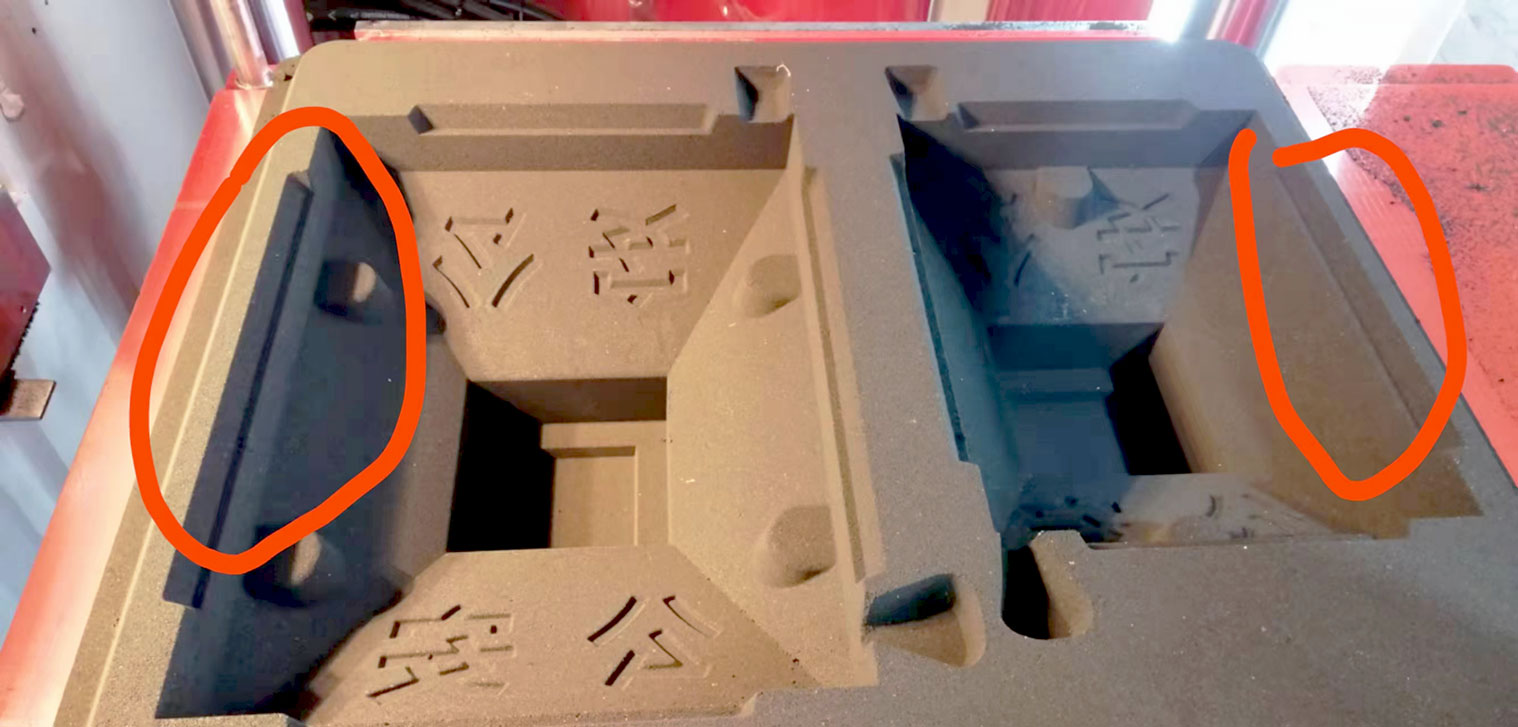-

-
Guangzhou Zhongzhu Machinery Co. LtdSand casting molding machine manufacturer
-
008615917377252 TEL:
-
E-mail: 470199755@qq.com

The mold of the fully automatic horizontal parting casting molding machine is a double-sided mold, usually made of lighter aluminum molds, and steel molds are also used; The fundamental difference between the traditional semi-automatic molding machine and the fully automatic horizontal parting casting molding machine lies in the fact that the automatic molding machine uses hydraulic cylinders to compress the sand inside the sand box in one go and with high strength, which has certain requirements for the hardness and strength of the mold to avoid damage to the mold when the compaction pressure increases during the sand mold compaction process; At the same time, we have also written some instructions and judgments for effectively protecting the mold in the hydraulic cylinder compaction program of the molding machine. For enterprises that purchase our equipment, we will require users to customize molds equipped with automated casting molding machines based on the mold size drawings provided by us, which is conducive to the normal mass production of automated casting molding in the later stage;

(As can be seen from the example shown in the above figure, most of the shapes of castings on the mold are concentrated on one side of the mold, and the castings are in a raised state and high in height. When making the mold, the raised side of the casting can be lowered, that is, a concave surface can be made at the bottom of the casting to lower the height of the mold, so that the overall height of the sand mold after molding is reduced, saving the use of molding sand. At the same time, there are ventilation holes on the side of the mold, which are ventilation holes Vertically connected to the exhaust plug on the mold, its function is to accelerate the discharge of gas inside the sand box during sand shooting, avoiding the compression of remaining gas and molding sand during compaction0)
For detailed information on the production of molds, users can consult our company. We can provide you with some suggestions based on the structural requirements of the product castings and the precautions that need to be taken in mold production as a reference. At the same time, we can also provide you with size specification drawings of various models of fully automatic horizontal molding machines, such as the thickness of the mold, the mold lifting angle, etc. A gap of at least 30mm should be kept between the casting and the casting or the iron liquid flow channel to avoid insufficient sand gap in the mold cavity, which may lead to casting defects after pouring; The gap between the casting and the edge of the sand mold should ensure a sand gap of more than 40mm to avoid overflow of molten iron and damage to the sand mold; When making molds, consideration should also be given to designing the diameter of the molten iron inlet and the flow direction of the molten iron during pouring. Based on the flow direction of the molten iron and the structure of the casting, air outlets should be reserved for the sand mold to discharge the internal air of the mold cavity during pouring, and the molten iron can be replenished in a timely manner during the cooling process after pouring; If the casting is more complex, we should process and design exhaust holes on the mold to achieve the effect of timely exhaust and drainage during sand box shooting; This includes designing a concave convex model based on the pouring system in the early stage of mold development to reduce the height of the mold and the difficulty of sand injection molding, as well as reducing the amount of sand used. While controlling the ratio of sand to iron to reduce costs, it can better complete the production molding of more complex casting products, while also taking into account the control of casting yield.

(As shown in the red circle position in the above figure, the mold did not reserve enough margin for edge molding sand during production. In automated molding, when the casting sand has poor fluidity or is relatively rough, it cannot be adequately replenished during compaction, which will cause problems such as loose and poor compactness of the molding sand at that position, and easily lead to problems such as the flow of molten metal from that position during pouring.)